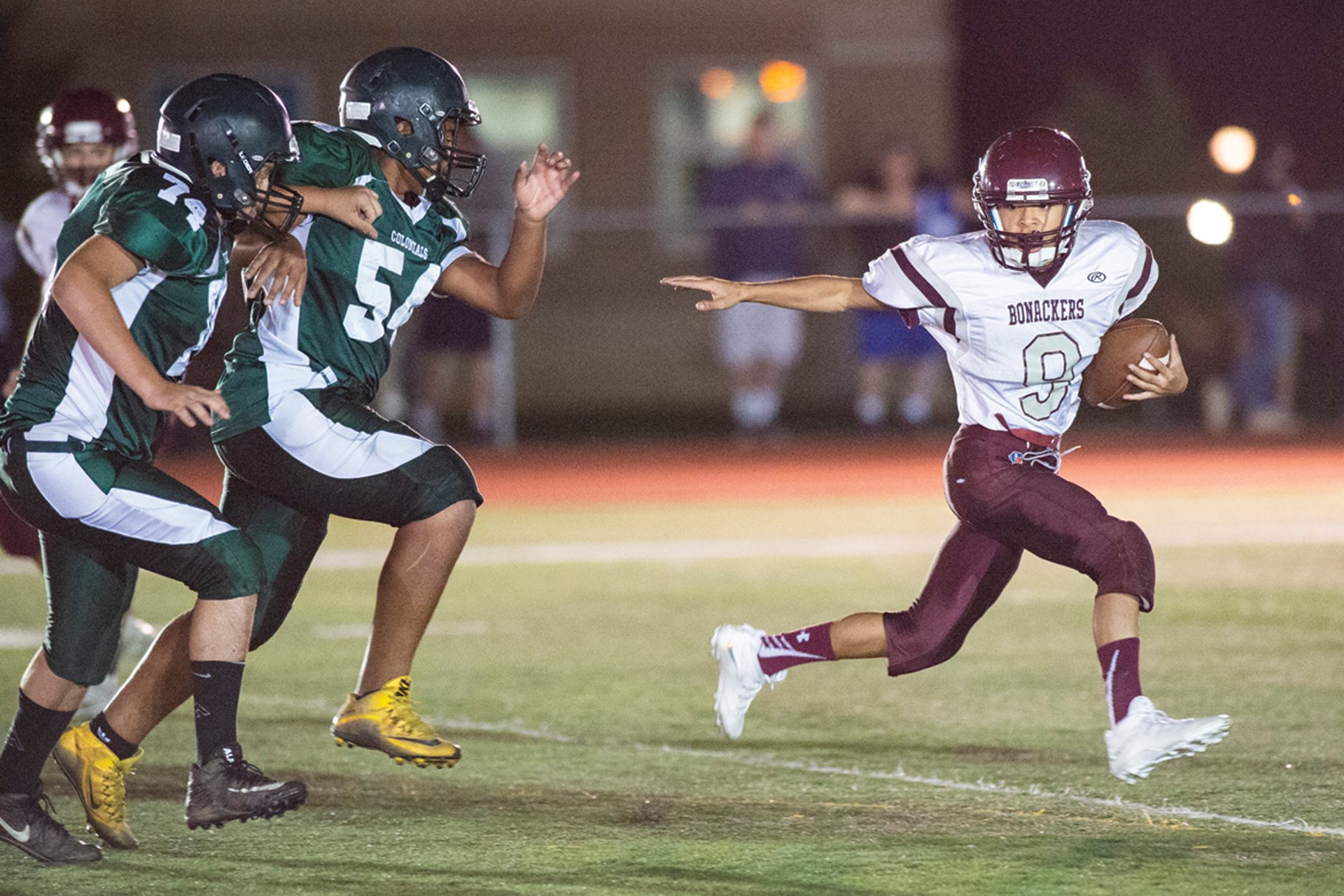Still No Varsity Football In East Hampton

The football fields on the East End continue to change, and with it, comes an effect on the sport at large.
At the end of last season, East Hampton made a pitch for its team to combine with Southampton’s, which is already made with additional students from Bridgehampton, and Pierson, but Southampton Athletic Director Darren Phillips did not want to restrict his seniors from having the chance to participate in the postseason, which was ultimately the deciding factor in him declining the offer. Because the Bonackers cannot field a team of 22 needed to compete, there will be no varsity football team in East Hampton for the third straight season. But there will be a junior varsity team, according to Athletic Director Joe Vasile-Cozzo.
Because East Hampton is already supposed to compete in a higher division because of its enrollment size, if it were to merge with Southampton, the combination of all four schools would force the new team to compete in Division I against powerhouse programs like William Floyd, Longwood, and Connetquot, according to Section XI Executive Director Tom Combs. He said if the teams wanted to remain in Division IV, which the team would be better suited for based on talent and size, the student-athletes would have to forfeit competing in the playoffs even if they qualified based on record.
“I felt terrible that last year they couldn’t front a team and had a handful of seniors that couldn’t play, but it just gets complicated with Section XI when you combine schools,” Phillips said. “The reality is that football numbers are dropping nationally, it’s not just a Southampton or East Hampton issue, and we’re even seeing it with some of the bigger schools in Suffolk.”
The athletic director said he’d asked about eight-man football being an option. There are currently 29 districts across three sections statewide that play this variation for a state championship title. Section III leads the way with 11 participating teams. Section V has gone from none a year ago to four last season, and more may join. Sections IV and IX have enough participants to run their own leagues. Nassau and Suffolk county dominoes are now falling, and as many as a dozen schools could be quick to follow.
“There’s a feeling that there’s a number of small schools out here in Suffolk that would consider it, but nobody wants to be the first one,” Phillips said. “If a bunch of us got together and looked at this as an option and have six or eight schools, then let’s do it. And while it’s also a different game, I think we need to do a better job of getting other teams to see the bigger picture. My thing to Section XI was: What’s the plan five years from now when more schools are looking to combine?”
Eight-man football requires 12 student-athletes, and 11-man, which Combs said is another option, needs 17.
“We’d have to have enough schools that want to do the same thing,” Combs said. “Last year, three or four teams were interested when we put out a survey. That wouldn’t be enough for us to start a league.”
He said the section is still looking into creating a Long Island league with teams from farther west, and said as soon as there’s enough schools interested, Section XI will do it.
“We’ve been trying to develop this for a number of years and it may come to fruition in the next couple,” he said. “We want to give kids an opportunity to participate. We’re going to do whatever we can to help out.”
Sag Harbor Athletic Director Eric Bramoff said he doesn’t think all athletic directors realize the landscape of football is going to change drastically this season and beyond.
“There are many schools that are already below our level with numbers, and we’re going to be there soon,” he said. “We told Section XI: ‘Something has to change, or you’re going to lose us. And if you don’t lose us now, you’re going to lose us in two years, or three years.’ These discussions have already started, and we know it’s going to be a struggle to maintain football numbers moving forward.”
Bramoff said he commends Section XI for listening to concerns, and understanding it isn’t just a small-town problem.
“Every time you lose a team, no matter if it’s Division I, II, III or IV, the alignment of all the divisions, even the bigger schools, will have to change — there’s always going to have to be a bottom in terms of enrollment numbers, and a ceiling, but if the bottom keeps changing, then the leagues have to get shuffled around,” he said.
“When it comes to football, it’s a very emotional decision. Everyone’s invested in their hometown football team,” Bramoff said. “These are difficult decisions for the community, so having these discussions a year before what I see as the tipping point is only going to benefit us moving forward. We always ask what our core reason for combining is, and it’s to give kids an opportunity to play the sport.”
desiree@indyeastend.com



